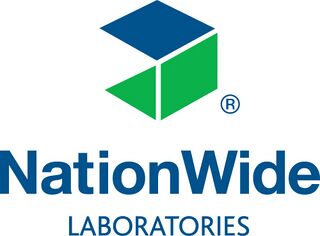Difference between revisions of "Creatine kinase"
| (2 intermediate revisions by 2 users not shown) | |||
| Line 1: | Line 1: | ||
| + | [[File:NationWide Logo.jpeg|right|link=https://www.nwlabs.co.uk/|alt=NationWide Logo|320x320px|frameless]] | ||
==CK (Creatine Kinase) == | ==CK (Creatine Kinase) == | ||
| − | |||
Formerly known as creatine phosphokinase (CPK). CK occurs in high levels in skeletal muscle, cardiac muscle and brain tissue although only skeletal and cardiac muscle isoenzymes are of major significance. CK is essential for the rapid conversion of ADP to ATP which releases energy for muscle contraction. If muscle tissue is disrupted, the enzyme is released into the blood stream and is readily detected. CK is a highly sensitive indicator of muscle damage but is poorly specific for any particular disease. Levels are frequently elevated when there is muscle damage secondary to other disease, for example collapsed/recumbent animals, seizure activity. CK increases are observed in anorexic cats. | Formerly known as creatine phosphokinase (CPK). CK occurs in high levels in skeletal muscle, cardiac muscle and brain tissue although only skeletal and cardiac muscle isoenzymes are of major significance. CK is essential for the rapid conversion of ADP to ATP which releases energy for muscle contraction. If muscle tissue is disrupted, the enzyme is released into the blood stream and is readily detected. CK is a highly sensitive indicator of muscle damage but is poorly specific for any particular disease. Levels are frequently elevated when there is muscle damage secondary to other disease, for example collapsed/recumbent animals, seizure activity. CK increases are observed in anorexic cats. | ||
| Line 42: | Line 42: | ||
[[NationWide Laboratories]] | [[NationWide Laboratories]] | ||
[[Category:Lizard and Snake Glossary]] | [[Category:Lizard and Snake Glossary]] | ||
| − | [[Category:Clinical Chemistry]] | + | [[Category:Clinical Chemistry|ABCDEFGHIJ]] |
Latest revision as of 15:55, 28 April 2022
CK (Creatine Kinase)
Formerly known as creatine phosphokinase (CPK). CK occurs in high levels in skeletal muscle, cardiac muscle and brain tissue although only skeletal and cardiac muscle isoenzymes are of major significance. CK is essential for the rapid conversion of ADP to ATP which releases energy for muscle contraction. If muscle tissue is disrupted, the enzyme is released into the blood stream and is readily detected. CK is a highly sensitive indicator of muscle damage but is poorly specific for any particular disease. Levels are frequently elevated when there is muscle damage secondary to other disease, for example collapsed/recumbent animals, seizure activity. CK increases are observed in anorexic cats.
Small animals
Experience has shown that levels can rise slightly with muscular exertion alone but where pathological conditions exist the levels are usually very high. Only large increases (>10,000IU/l), or persistent increases (>2,000IU/l) should be regarded as significant. Increases associated with cardiomyopathies are smaller than with rhabdomyopathies. Generally, re-sampling in 2 to 3 days is recommended to exclude trauma as a cause of elevated levels.
Causes of increased CK activity
- Trauma (surgery, i/m injections, complicated venipuncture, recumbency, severe exertion and cramping in greyhounds)
- Seizures
- Hypothyroidism
- Myositis (infectious, immune-mediated, nutritional)
Complementary tests
Usually determined along with AST to assess possible muscle damage. Thyroid function testing is indicated if hypothyroidism is suspected.
Please visit www.nwlabs.co.uk or see our current price list for more information
Equine
Causes of increased CK activity
- Muscle damage for example, exertional rhabdomyolysis n Trauma (i/m injections, surgery, severe exertion)
- After endurance rides
- Nutritional myodegeneration
- Malignant hyperthermia
Rare causes of increased CK activity
- Myocardial infarction
- Hypothyroidism
- Post anaesthetic myopathy
Following an episode of azoturia, CK peaks after 6-12 hours and declines rapidly over 2 days returning to baseline levels by 3-4 days. AST peaks at 24-48 hours and declines slowly over 7-10 days returning to baseline levels by 10-21 days.
Complementary tests
AST, LDH, LDH isoenzymes
Please visit www.nwlabs.co.uk or see our current price list for more information
